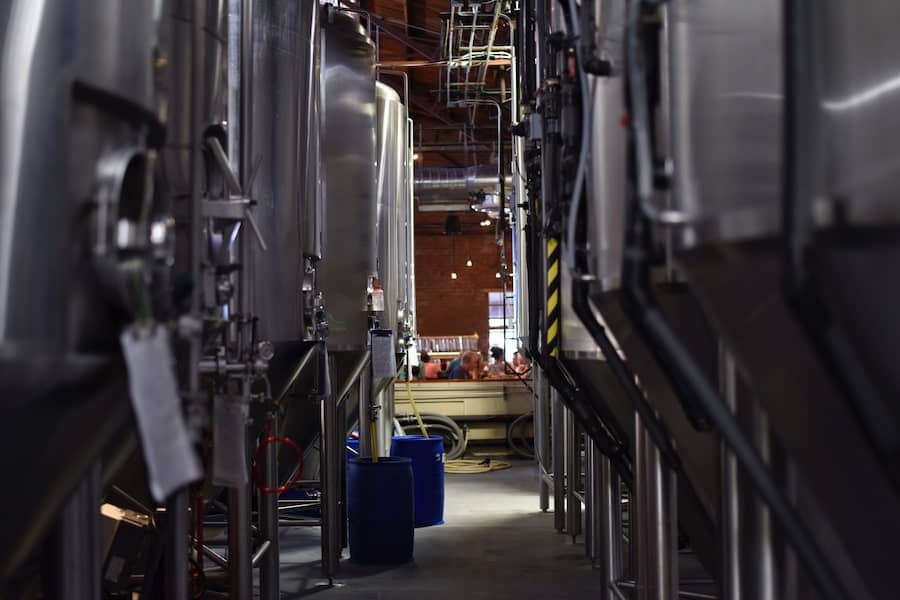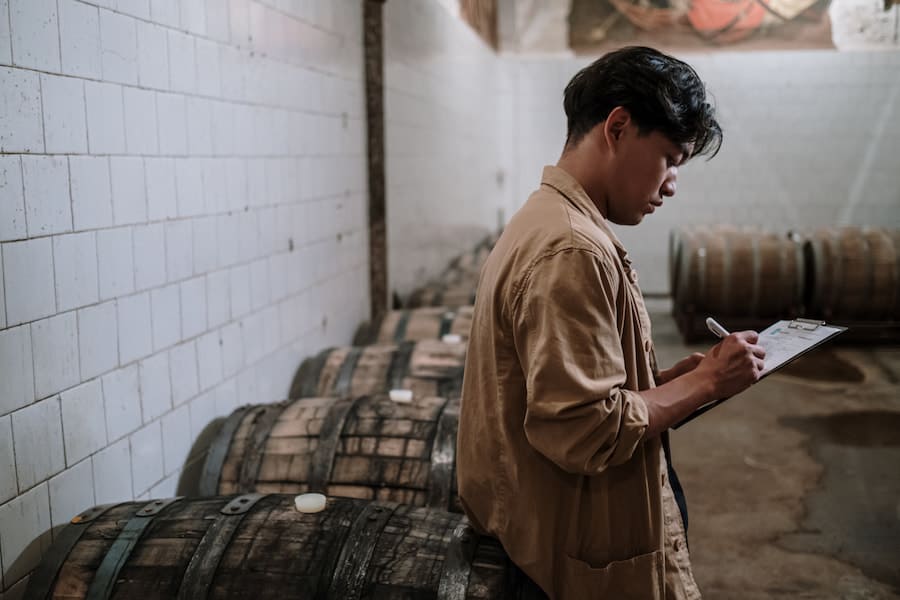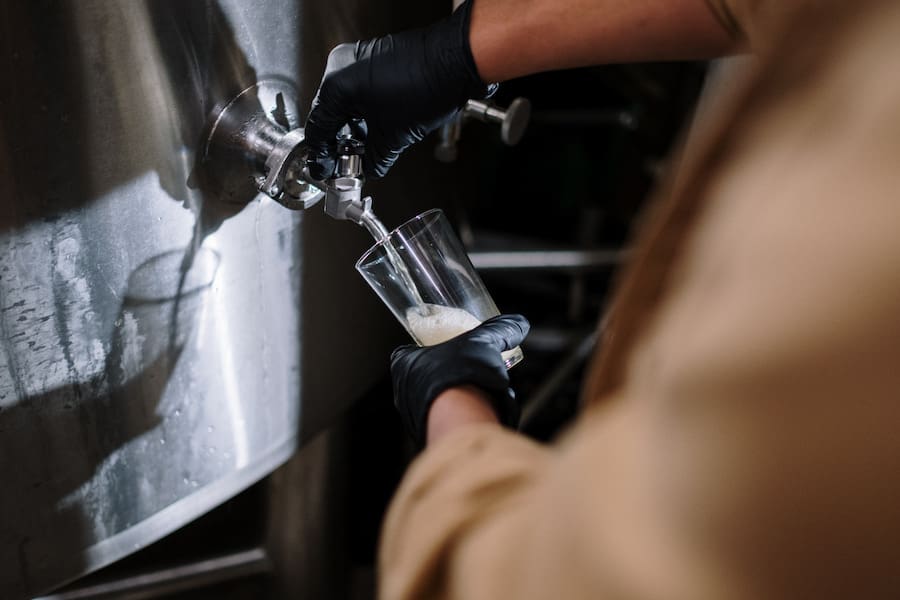If you buy something through a link in our posts, we may get a small share of the sale.
Fermentation is the foundational chemical process when making hard spirits and beer. Fermentation occurs when single-celled living fungi, known as the yeast, are introduced to sugars and start to consume and metabolize them to produce alcohol. It is therefore important to know when fermentation is done.
Contents
How to Know When Fermentation Is Done
The duration fermentation takes to complete will depend on the yeast strain you are using and the beer recipe you are following. For instance, lagers take around 21 to 40 days, while ales take around 7 to 14 days to ferment. Some yeast strains, such as the Belgian yeast, are unique, and fermentation can last from 14 days to 6 months.
Although it can be challenging to know whether fermentation is complete as a process, I can use the by-products of fermentation to know whether it is complete or not. Usually, the by-products of fermentation are ethyl alcohol and carbon dioxide gas.

As long as the fermentation process happens, carbon dioxide gas will be. It means if there is no production of CO2 gas, then the fermentation is complete or has stalled. Here are different methods that can help you know when the fermentation process is complete.
Use a Hydrometer
A hydrometer is a basic device that helps measure the density ratio of different liquids compared to the density of water. Using a hydrometer when making beer will help you determine the degree to which the yeast strain you’re using has metabolized sugars to produce ethanol.
You can then use the data to determine how healthy fermentation occurs and whether it is completely not. That means you can use a hydrometer to know when issues are during fermentation. Here are the steps to follow when using a hydrometer to determine whether the fermentation is complete or not.
Retrieve the Sample and Then Insert the Hydrometer
The first step when using a hydrometer to gauge the fermentation process is taking the first measurement immediately after the cooldown before you pitch the yeast. This first reading you’re going to obtain is commonly known as the original gravity or the O.G.
To obtain this reading, you will need to retrieve a sample of the fermenting beer using a beer thief and then transfer it to a testing cylinder or jar. Remember that the testing cylinder or jar needs sufficient liquid to suspend the hydrometer fully. Once your liquid is in the testing jar, place the hydrometer in the liquid and allow it to buoy.
Give it time until all the air gravitates upwards and escapes from the liquid. For accurate readings, it is advisable to position your hydrometer vertically at the center of the liquid.
Record the Original Gravity Reading
The calibration of the hydrometer represents increments in specific gravity points. When using a hydrometer to record your original gravity reading, you should note the following things.
- The gravity reading is at the level at which your fermenting beer rises. This level is commonly known as the liquid-air line.
- Read and record the value on your hydrometer that the liquid-air line crosses. In most cases, a fermenting beer will have an original gravity reading between 1.035 and 1.060.
- The ingredient kit that you are using to prepare your beer will have a list of the expected original gravity value, so reference this value to confirm whether everything is on the right track.
- When doing the reading, it is advisable to read the bottom of the meniscus of the liquid if you want to get the most accurate data. Typically, this is the true level of the liquid as the other level is a pull-up by tensional forces on the hydrometer itself or the sides of the jar.
Calculate With Temperature
Considering the hydrometer reading assumes a standard temperature of 59 degrees Fahrenheit, it is paramount to determine the temperature of your fermenting beer to get the most accurate reading.
That means you’ll need to calibrate if your temperature reading is different. You will need to add the gravity reading to your initial reading to get the correct specific gravity.

Obtain Another Reading to Get the Final Gravity
You will need to obtain another hydrometer reading when you suspect that the fermentation process is nearing the end or complete. This reading is the Final Gravity Reading or F.G. The value of this reading should be the same or close to the value in your ingredient kit for the specific beer recipe you are following.
In most cases, this reading will be around 1.015 to 1.005, which is around 1/4th or 1/5th of the beer’s original gravity reading. Many people mistake using a hydrometer to frequently test the brew, which increases the chances of exposing it to harmful bacteria air.
Remember that exposure of a fermenting beer to harmful bacteria can spoil the whole batch. Therefore, it is advisable to use a hydrometer to test before pitching and after you suspect that the fermentation is complete.
You can also use a hydrometer to test if you suspect the fermentation is stalled and needs restarting. However, it’s advisable to exercise extreme caution to avoid contamination.
Check the Yeast Inside
It’s advisable to ferment your beer in a glass or transparent plastic container that can allow you to observe the brewing process. The yeast is most active during the early stages of fermentation.
The yeast will be visible as small lumps swirling around in the fermenting beer during this stage. The yeast will usually rise to the top of the fermenter and then sink back. Some yeast dies off, forms a suspension, and sinks as the process continues. When the fermentation process is nearing its end, the yeast flocculates.
As the yeast flocculates, a thick residual commonly known as a slurry will form and collect at the bottom of the container. This slurry is a yeast cake and consists of residuals, dead and inactive yeast.
Although the beer will be somehow hazy, it will be visibly a little bit more clear than when you first pitched the yeast. When this happens, confirm whether the fermentation is complete using a hydrometer.
Check the Airlock
During the active fermentation process, bubbles form in the airlock. The bubbles result from the production of carbon dioxide gas during active fermentation. As the carbon dioxide gas increases inside the fermenter, the pressure builds up in the fermenter.
When this pressure exceeds the ambient pressure outside, the carbon dioxide gas starts to escape via the airlock as bubbles. When the fermentation is actively occurring, the gas bubbles will continuously stream via the airlock. When the fermentation process slows down, you will notice how the bubbles passing through the airlock reduce.
The stoppage of this bubbling is an indicator that the fermentation process is complete. Keep in mind that this is not always the case, especially when using a plastic bucket fermenter, as the carbon dioxide gas might be escaping through leakages in the lid. That means you’ll need to confirm whether indeed the fermentation process is complete using a hydrometer.

The Krausen Forms and Falls
Usually, a foamy krausen layer will form on the fermenting beer during active fermentation. Although the krausen primarily helps to protect the fermenting beer from contamination of harmful bacteria in the air, you can use it to determine whether the fermentation process is complete or not.
Typically, the krausen consists of fermenting beer, hop oils, yeast cells, and other residuals. In most cases, this krausen layer will form within the first 24 hours after pitching yeast, when the fermentation process is most active. This foamy layer will subside once the process starts slowing down and ultimately flocculates.
Once the fermentation is over, this krausen layer will sink to the bottom of the fermenter and most of the undesirable waste products of fermentation. That means you can use the krausen layer to determine how the fermentation process progresses when it is nearing the end and complete.
How Can I Know the Fermentation Is Stuck but Not Complete?
It is challenging for many beginners to differentiate between a stalled fermentation and a complete fermentation. Most things that indicate a complete fermentation can also indicate a stalled fermentation.
For instance, a stalled fermentation will cease to produce carbon dioxide bubbles, and a residual of dead yeast will form. In this regard, you will need to use the ingredient kit for your brewing recipe and a hydrometer to confirm that the fermentation is complete but not stalled.
If the original gravity reading matches that in the ingredient kit, but the second gravity is much lower than expected, there are chances that your fermentation is not complete but stuck. It is a sign that your fermentation has stopped prematurely, and you will need to restart it.
Frequently Asked Questions
For How Long Should I Ferment Beer?
The duration takes to ferment beer is relative to temperature. Typically, it is not about the duration of ferment but for the yeast to finish its job. That means you don’t have to assume how long the fermentation process will take. Instead, check for the above signs.
Test with a hydrometer for around three days if you suspect the fermentation is complete. If the readings are the same for all three days, the sugar levels are now stable, and the fermentation is complete.
Why Is the Airlock Not Bubbling and the Fermentation Is Not Complete?
The airlock might stop bubbling if the seal on the fermenter is not sealing well and carbon dioxide gas is escaping through the leaks.
As the fermentation starts to slow down and the pressure of carbon dioxide inside the fermenter reduces, all the gas might escape through the leaks without having to bubble through the airlock. The leakages are usually common in plastic fermenters, and you should expect them if you are fermenting in one.
Final Thoughts
Depending on the concentration of the ambient temperature, the concentration of the sugars, and the yeast strain you are using, fermentation will take around one or several weeks to finish.
Once the fermentation is complete, you can transfer the beer into a keg or bottle. With the above guide on knowing when fermentation is done, you’ll have no trouble recognizing a stalled or complete fermentation.

